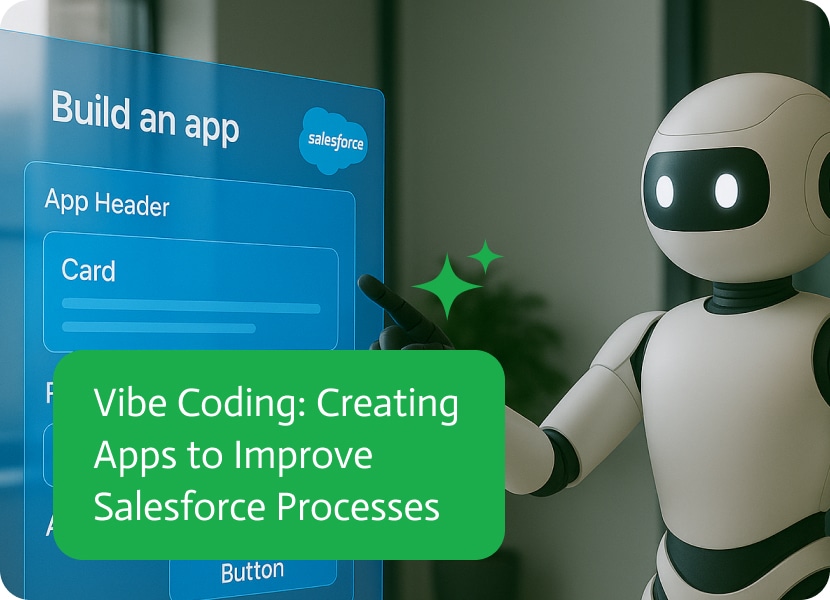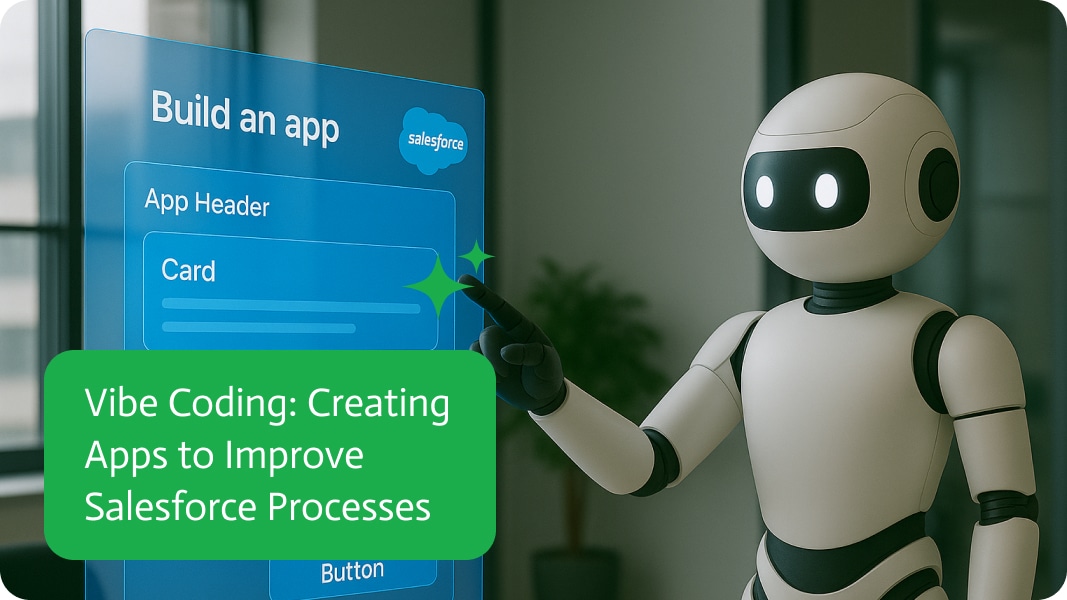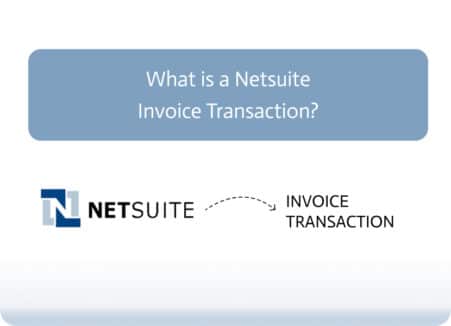

Vibe Coding: Creating Apps to Improve Salesforce Processes With Simple Prompts
Salesforce has been called many things: indispensable, sprawling, powerful, and maddening. Some see it as key to current sales methods, while others see it as a glorified spreadsheet that eats budgets for breakfast. Either way, it’s not going anywhere. The challenge has always been the same: how do you bend this giant CRM beast to your will without breaking the bank or waiting six months for IT to build you “just one little app”?
Enter vibe coding, the idea that you can now create Salesforce apps the way you might text a friend, with a quick, plain-language prompt. No coding degree, no arcane knowledge of Apex, no wrestling with workflows that feel like they were designed in 2005. Just type what you need, and watch a working app appear.
And leading the charge? Noca, a Vibe coding and AI agents platform that takes the grunt work out of Salesforce customization by letting anyone spin up an app with nothing more than a sentence.
Salesforce Evolution From Clicks to Prompts
Salesforce has been through phases. In the beginning (circa 1999), it was radical simply because it lived in the cloud. That was enough to make old-school on-premise CRMs look like fossils. Then came the customization wave, teams realized Salesforce could do a lot, but only if they had admins and developers to help. Cue years of custom Apex coding, point-and-click workflow builders, and low-code platforms that still somehow required too much… well, code.
Vibe coding is the next chapter. Instead of needing a specialized admin, you type: “Build me an app that flags customers who haven’t responded to outreach in 10 days and nudges the account manager.” And poof, done. It’s like skipping from stone tools to power drills overnight.
How Noca Turns Prompts into Salesforce Apps
The beauty of Noca is in its simplicity. You don’t “configure a workflow.” You don’t “map objects.” You literally just say what you want. Noca parses your request, builds the logic behind the scenes, and drops a functional Salesforce app into your lap.
For example, a retail manager wants to track top customers who spend over $500 a month and send them offers. Instead of begging IT to build a dashboard, they write:
“Create an app that shows customers who spend over $500 monthly and reminds sales reps to send a personal offer.”
In minutes, she’s got a live app humming inside Salesforce. This isn’t just a time-saver, it’s a democratization tool. Suddenly, people who have never touched a line of code are shaping Salesforce to fit their exact workflow. No committees, no endless Jira tickets, and no praying that the dev team has spare capacity. Just instant solutions.
The Most Important Salesforce Apps Built with Vibe Coding
So what exactly are people building when they sit down with a blank prompt box and a stubborn Salesforce workflow? The short answer: a lot more than you’d expect. While some use cases are obvious, like scoring leads and pipeline tracking, others are surprisingly inventive. But most vibe-coded apps fall into a few powerful categories, each of which makes Salesforce feel less like a dusty filing cabinet and more like an assistant.
Lead Management Apps
Ask any sales rep what clogs up their day, and you’ll hear the same thing, the amount of time spent searching through leads, trying to guess who’s worth a call. Vibe coding fixes that with apps that auto-score prospects through behavior or history. Instead of chasing cold leads, reps get nudges like, “Call Sarah, she’s opened three of your emails and just downloaded a whitepaper.”
High-probability leads rise to the top, while dead ends fade into the background. For small teams, that can mean closing deals faster. In terms of larger enterprises, it scales into millions in saved productivity hours.
Customer Interaction Trackers
One of Salesforce’s greatest strengths is data, but ironically, it’s also one of its biggest headaches. Calls live in one tab, emails in another, and purchase history somewhere else. A vibe-coded tracker app displays a single tidy view that pulls everything into a central feed.
Picture a rep opening a customer profile and instantly seeing the last call logged, open support tickets, and lifetime spend, like yesterday. Suddenly, outreach feels personal, not robotic. The customer gets an interaction that says, “We know you, we see you,” instead of some generic pitch.
Forecasting Apps
Forecasting sales is notorious for being both essential and painfully outdated at the same time. Many managers still rely on end-of-month reporting to figure out whether they’re on track. Vibe coding shatters that delay through apps that update forecasts as deals move.
Watch your projections shift live: a big deal closes and the quarter instantly looks brighter; a key prospect goes cold and the app changes immediately. No more awkward leadership meetings where the numbers don’t match reality. Forecasting apps turn Salesforce into a live pulse monitor, not a dusty ledger.
Service Automation Tools
Customer service can be a black hole of inefficiency if tickets are routed poorly. A vibe-coded service app makes sure requests land in the right place instantly. Routine questions go to frontline reps, complex issues to specialists, and urgent cases escalate before the customer gets frustrated.
Some companies even add proactive triggers: if a ticket sits untouched for 24 hours, the app pings a manager. This responsiveness may well be the difference between a customer feeling valued and not. It’s automation, yes, but it feels like care.
Engagement Dashboards
If sales reps dread pipeline reviews, customer success teams dread churn. Engagement dashboards help by consolidating signals, logins, product usage, and support into a churn-risk score.
It’s predictive rather than reactive, and that’s critical. Saving a customer before they leave is far cheaper than winning a new one. Engagement dashboards turn Salesforce from a historical record into an early-warning radar system.
Real World Example of Salesforce (VIP Tracker App)
One retail chain leaned into Noca to create what they dubbed the “VIP Customer Tracker.” Every time a high-value customer bought something, the system instantly alerted the assigned rep with personalized follow-up suggestions: recommend a complementary product or send a thank-you note.
The results were immediate. Repeat sales went up, customer retention increased, and shoppers started referring friends. Everyone loves the VIP treatment. For the reps, it’s a personal concierge feeding them next-best-action advice on demand.
Beyond the Basics of Vibe Coding Salesforce Apps
What’s striking is the creativity teams show once they realize they’re not bound by boring templates. Some companies are building web applications via prompt that:
- Trigger custom onboarding journeys the moment a deal closes
- Auto-generate renewal reminders with tailored incentives
- Connect Salesforce to Slack so critical alerts appear where people already work
- Build micro-surveys that pop up after customer interactions and feed results into Salesforce
In other words, vibe coding is less about replacing Salesforce’s core features and more about filling the cracks where the platform doesn’t quite match a team’s daily workflow. Each app is like a patch of glue, smoothing over friction points until the system finally feels seamless.
Why Real-Time Matters (Hint: Because Delays Kill Deals)
Salesforce is a data goldmine, but by the time some teams get the insights they need, the opportunity has already slipped through their fingers. That promising lead who stopped replying last week? Gone. That support ticket left unanswered for two days? Now a Twitter rant.
Vibe coding closes that gap. It lets companies build apps that react instantly, flagging churn signals, auto-updating forecasts, or reminding a sales rep that it’s time to reach out before a competitor swoops in. Real-time isn’t a luxury, it’s the difference between closing the deal and losing it.
Expert Insights on Salesforce Vibe Coding Revolution
CRM experts have been buzzing about this trend. Gartner predicts that by 2027, over 65% of business applications will be built with NLP interfaces. Not “could,” not “might,” but will.
Why? Because the cause-and-effect is clear:
- When customization is hard, companies don’t do it.
- When companies don’t do it, Salesforce adoption lags.
- When adoption lags, ROI tanks.
But if customization becomes as easy as typing a sentence, adoption soars. Teams actually use the tools. Data gets cleaner. Reports get better. Leadership finally gets the dashboards they’ve been begging for since 2012.
As one CRM consultant put it bluntly, “The apps that make Salesforce invisible are the ones that win.”
Opportunities and Pitfalls
Let’s not pretend this is all sunshine and roses. Vibe coding comes with opportunities and headaches.
Opportunities:
- Non-technical staff get power they never had before.
- Companies can experiment faster by building, testing, and scrapping apps in days.
- Integration potential grows: vibe-coded apps don’t just sit in Salesforce; they can link marketing, ERP, and service platforms.
Pitfalls:
- Too much freedom = chaos. If every team builds its own Franken-app, governance nightmares follow.
- Security risks. Prompting systems need serious guardrails so sensitive data doesn’t slip into the wrong places.
- Automation addiction. Just because you can automate something doesn’t mean you should.
The trick is balance: give people freedom to innovate, but set standards so you don’t wake up to a spaghetti mess of rogue apps.
The Road Ahead for Vibe Coding in Salesforce
Enterprise software is already becoming conversational. In the not-so-distant future, you won’t have to blindly find your way around menus; you’ll just ask, “Show me the top 10 deals likely to close this quarter and advise me on the procedure.” The system will answer with an app, not a static report.
As NLPs improve, these apps won’t just follow instructions, they’ll anticipate needs. Imagine Salesforce whispering, “Your pipeline is light two months out. Want me to spin up a lead re-engagement workflow?” That’s not just customization. That’s collaboration.
Long-term, vibe coding won’t stay confined to Salesforce. It’s going to bleed into HR, finance, supply chain, and the whole corporate stack. Enterprise software is shifting from big, rigid platforms to flexible, conversational systems that mold themselves around the business.
Conclusion (Future of Vibe Coding Salesforce)
Salesforce has always been solid, but for many teams it felt like using a jet engine to power a lawnmower. Vibe coding changes that. By letting people shape Salesforce with a sentence and leveraging Prompt Automation to turn those instructions into fully functional workflows, platforms like Noca are transforming it from a burdensome system into a living, breathing partner.
The payoff is enormous: faster deal cycles, smarter forecasting, satisfied customers, and now you finally have a CRM that feels like it works for you, not the other way around. In other words, the future of Salesforce is you telling the system what you want, and it quietly builds it for you. No drama, no delays. Just vibes.


